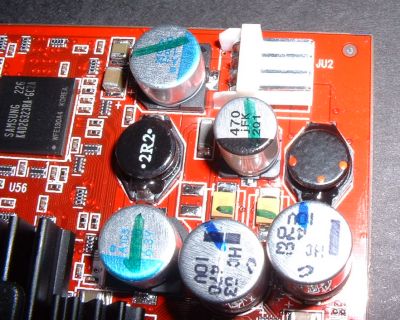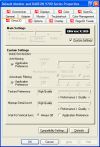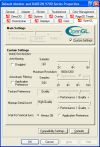Radeon 9700 PRO Package Contents, Installation and Drivers
The package we received looked like a retail package but was one for promotional purposes, so there is no guarantee that what was received will be included in the retail versions available to purchase.
Although we are reviewing the ATI Radeon 9700 PRO, dependant on where you are based this may be considered a reference board preview, rather than a review, since you may not be able to purchase this actual board. Following their plan to become a chip supplier rather than a chip and board supplier, ATI have now fully pulled out of selling 'Built by ATI' boards in some markets and are now completely reliant on 3rd party board vendors to fill the gap in those markets.
The installation of the board was as straight forward as any VGA install is, other than the one caveat of the extra power connector on the board. With R300 being such a complex chip running at high frequencies the board is a little power hungry - to this effect ATI have removed any potential incompatibility with some motherboards not conforming fully to AGP power specifications by drawing power directly from the power supply. The power is taken via a standard Floppy drive connector and should you not have one spare ATI have included a molex power splitter.

Once in place the connector was very firm and I don't believe there should be any issues with it 'falling' out of place during operation, since it does need a firm tug to dislodge it. Interestingly the ATI instruction manual detailing this element of installation indicated that 9500 would also have this power supply connector, which could give some clue as to what chip will be used for 9500.
The drivers that ATI shipped to us conform to their CATALYST version 2.1 driver set. The control panels of the drivers remain very similar to those from other ATI boards, although some changes are visible in the SMOOTHVISION FSAA and anisotropic filtering mode available.
As we can see only 2X, 4X and 6X FSAA modes are now available on Radeon 9700 PRO, removing the 3X and 5X modes Radeon 8500 had. The 'Quality' and 'Performance' mode toggle has also been removed from the FSAA selector indicating that ATi are sticking to Multi Sampling FSAA for the time being. For anisotropic filtering the same degrees are present on 9700 PRO as 8500, though now this has a 'Performance' and 'Quality' option to toggle between the anistropic implementation initially featured on 8500, which is limited to bilinear filtering, and the new high quality mode that is is capable of both bilinear and trilinear filtering.
Test Setup
|
Test System |
|
Intel Pentium4 2.53GHz ATI Radeon 9700 PRO 128MB- Display Driver 7.75 (CATALYST 02.2) |
|
Games Benchmarks |
|
| Jedi Knight II: Jedi Outcast | Version 1.02a Full Game Detail Settings Trilinear Filtering |
| Return to Castle Wolfenstein |
Version 1.32 3DCenter 'Checkpoint' Demo used Full Game Detail Settings Trilinear Filtering |
| Serious Sam: Second Encounter | Version 1.05 ExtremeGFX Add On used Anisotropic Filtering Disabled, Trilinear Filtering Only "The Citadel" Demo |
| Dungeon Siege | Version 1.0 ExtremeTech Benchmark Modification used Full Game Detail Settings |
| Max Payne | Version 1.05 Full Game Detail Settings Trilinear Filtering 3D Centre's Benchmark mod used "Shooting Alex" Benchmark |
| All games benchmarks using 32bit colour and 32bit textures (where applicable) | |
The Radeon 8500 has been included in many of the tests to give a baseline comparison. This should give us an indication of how far ATI have moved on over the generation of architectures.


